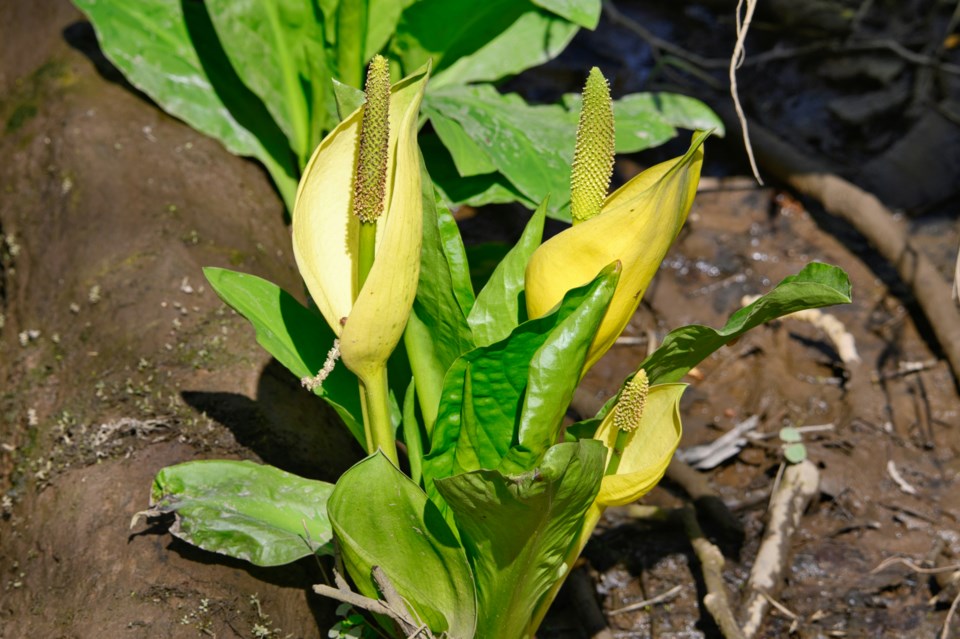Love ‘em or hate ‘em, skunk cabbage is synonymous with spring in Squamish, and you can usually smell them before you see them.
Skunk cabbage grows in swamps, and along slow-moving streams throughout much of North America. It’s unfortunate they’ve been given such an unattractive moniker. More preferable is the alternate name, “swamp lantern,” which better conveys the plant’s illuminating presence in wet places.
The bright yellow sheaf you see poking up in early spring is called a “spathe,” which wraps around the distinctive yellow club called the “spadix.” If you look closely at the spadix, you will see hundreds of very small flowers which are responsible for the plant’s heady aroma and attract the pollinating beetles and flies, who mistake the smell for rotting flesh.
The early spring arrival of skunk cabbage attracts more than just insects: it makes great eating for bears awakening from their winter naps. Since there is little else for bears to eat when they first emerge in spring, skunk cabbage forms an essential part of their diet.
The generic name of our western variety, lysichiton americanus, comes from the Greek for “loose tunic” and refers to the way the spathe loosely envelops the club. These leaves can grow as long as 1.5 metres, and were used by First Nations to wrap food and for lining and pit ovens.
Indigenous groups also reportedly steamed the roots to eats during periods of famine, and as a medicine. In case you are tempted: the raw plant is inedible to humans and can cause serious discomfort to an unwary diner.
Skunk cabbage can be found throughout Squamish (check out the “Senior Smoother” trails which run in the woods between Finch drive and the Adventure Centre). No matter what you think of skunk cabbage: their early arrival is a harbinger of the abundance of new life yet to arrive in our forests and wetlands.
Alison Wald is a volunteer with the Squamish Environment Society (SES).
Bob Brett is a professional biologist who serves on the board of the Whistler Naturalists.





